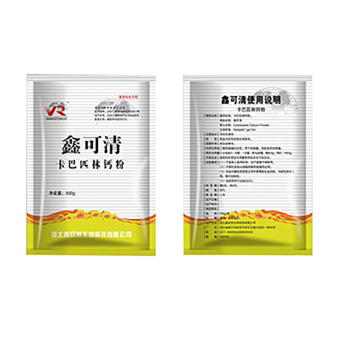- Afrikaans
- Albanian
- Amharic
- Arabic
- Armenian
- Azerbaijani
- Basque
- Belarusian
- Bengali
- Bosnian
- Bulgarian
- Catalan
- Cebuano
- Corsican
- Croatian
- Czech
- Danish
- Dutch
- English
- Esperanto
- Estonian
- Finnish
- French
- Frisian
- Galician
- Georgian
- German
- Greek
- Gujarati
- Haitian Creole
- hausa
- hawaiian
- Hebrew
- Hindi
- Miao
- Hungarian
- Icelandic
- igbo
- Indonesian
- irish
- Italian
- Japanese
- Javanese
- Kannada
- kazakh
- Khmer
- Rwandese
- Korean
- Kurdish
- Kyrgyz
- Lao
- Latin
- Latvian
- Lithuanian
- Luxembourgish
- Macedonian
- Malgashi
- Malay
- Malayalam
- Maltese
- Maori
- Marathi
- Mongolian
- Myanmar
- Nepali
- Norwegian
- Norwegian
- Occitan
- Pashto
- Persian
- Polish
- Portuguese
- Punjabi
- Romanian
- Russian
- Samoan
- Scottish Gaelic
- Serbian
- Sesotho
- Shona
- Sindhi
- Sinhala
- Slovak
- Slovenian
- Somali
- Spanish
- Sundanese
- Swahili
- Swedish
- Tagalog
- Tajik
- Tamil
- Tatar
- Telugu
- Thai
- Turkish
- Turkmen
- Ukrainian
- Urdu
- Uighur
- Uzbek
- Vietnamese
- Welsh
- Bantu
- Yiddish
- Yoruba
- Zulu
Nov . 18, 2024 09:57 Back to list
tylosin 50 injection
Tylosin 50 Injection A Comprehensive Overview
Tylosin is a macrolide antibiotic that is widely used in veterinary medicine for its effectiveness against various bacterial infections in animals. It is particularly beneficial in the treatment of respiratory diseases, gastrointestinal infections, and skin conditions caused by susceptible pathogens. One of the formulations of Tylosin is Tylosin 50 Injection, which contains 50 mg of Tylosin per ml and is specifically designed for injection. This article will explore the applications, benefits, dosage, administration, and potential side effects of Tylosin 50 Injection.
Applications of Tylosin 50 Injection
Tylosin 50 Injection is primarily utilized in livestock, including cattle, swine, and poultry. It is particularly effective against Gram-positive bacteria, as well as certain Gram-negative bacteria, mycoplasmas, and some protozoal infections. Common conditions treated with Tylosin include
1. Respiratory Infections Tylosin is often employed to manage pneumonia and other respiratory illnesses that are common in livestock, helping to reduce morbidity and improve recovery rates. 2. Enteritis and Diarrhea Infections that cause gastrointestinal disturbances can have detrimental effects on livestock health and productivity. Tylosin treatment can effectively alleviate symptoms and promote recovery.
3. Skin Conditions Dermatological infections in animals can lead to significant discomfort and disease. Tylosin has proven effective in treating various skin infections.
The use of Tylosin 50 Injection contributes to the overall health of livestock, ensuring that farmers can maintain productive herds and flocks.
Benefits of Tylosin 50 Injection
The benefits of using Tylosin 50 Injection in veterinary practice include
- Rapid Action As an injectable antibiotic, Tylosin is absorbed quickly into the bloodstream, allowing for prompt action against infections.
- Wide Spectrum of Activity Tylosin's ability to combat a range of bacterial pathogens makes it a versatile choice for veterinarians in treating various infections
.- Easy Administration The injectable form is particularly advantageous in cases where oral medications may not be feasible due to animal stress or difficulty in swallowing.
tylosin 50 injection

- Safety Profile Generally, Tylosin has a favorable safety profile when used according to veterinary recommendations, making it a trusted option for treating infections.
Dosage and Administration
The dosage of Tylosin 50 Injection varies depending on the species of animal being treated and the severity of the infection. Typically, the injectable form is administered subcutaneously or intramuscularly. A veterinarian will determine the appropriate dosage based on the specific case and the animal's weight.
It is crucial to follow the prescribed dosage and treatment duration to prevent antibiotic resistance. Farmers and animal caretakers should also be aware of any specific withdrawal times that are necessary before the animal can be processed for food.
Potential Side Effects
While Tylosin 50 Injection is generally well-tolerated, some animals may experience side effects. Commonly reported side effects include
- Injection Site Reactions Swelling or irritation may occur at the injection site, typically resolving without intervention.
- Gastrointestinal Upset Diarrhea or nausea can occasionally be observed in some animals following treatment.
- Allergic Reactions Although rare, allergic reactions can occur, and any signs of anaphylaxis should prompt immediate veterinary attention.
It is important to monitor animals closely during and after treatment for any adverse reactions and to report these to a veterinarian.
Conclusion
Tylosin 50 Injection is a vital tool in veterinary medicine, providing effective treatment for various bacterial infections in livestock. Its rapid action, broad spectrum of activity, and ease of administration make it a preferred choice among veterinarians. However, as with any antibiotic, responsible use is crucial to maintaining its efficacy and minimizing the risk of resistance. By following veterinary guidance on dosage, administration, and monitoring for side effects, livestock producers can ensure the health and productivity of their animals while contributing to overall food safety and quality.
-
Guide to Oxytetracycline Injection
NewsMar.27,2025
-
Guide to Colistin Sulphate
NewsMar.27,2025
-
Gentamicin Sulfate: Uses, Price, And Key Information
NewsMar.27,2025
-
Enrofloxacin Injection: Uses, Price, And Supplier Information
NewsMar.27,2025
-
Dexamethasone Sodium Phosphate Injection: Uses, Price, And Key Information
NewsMar.27,2025
-
Albendazole Tablet: Uses, Dosage, Cost, And Key Information
NewsMar.27,2025













